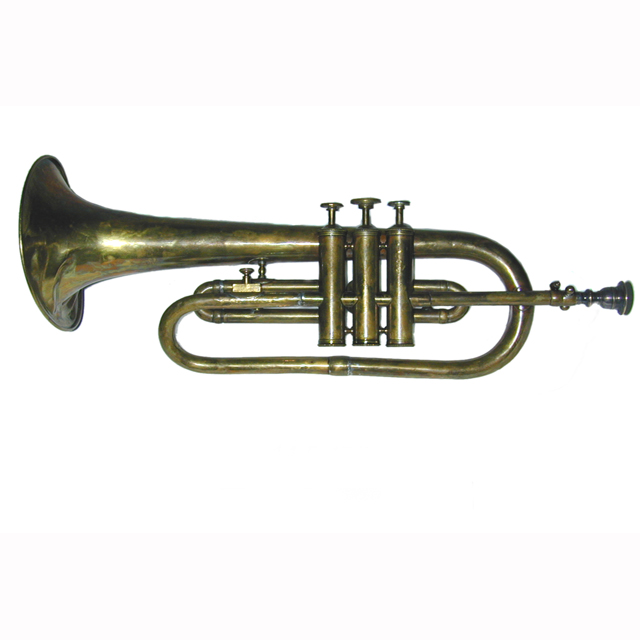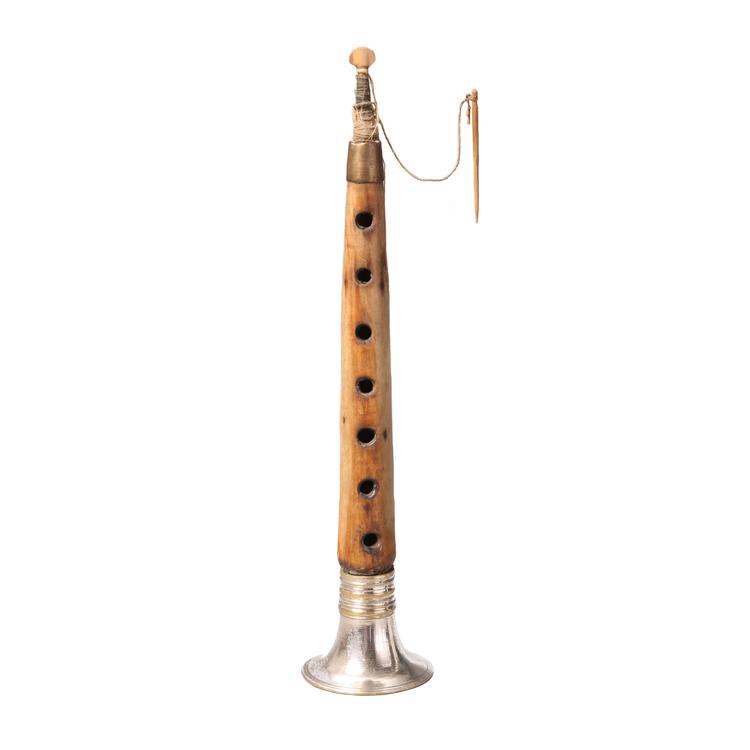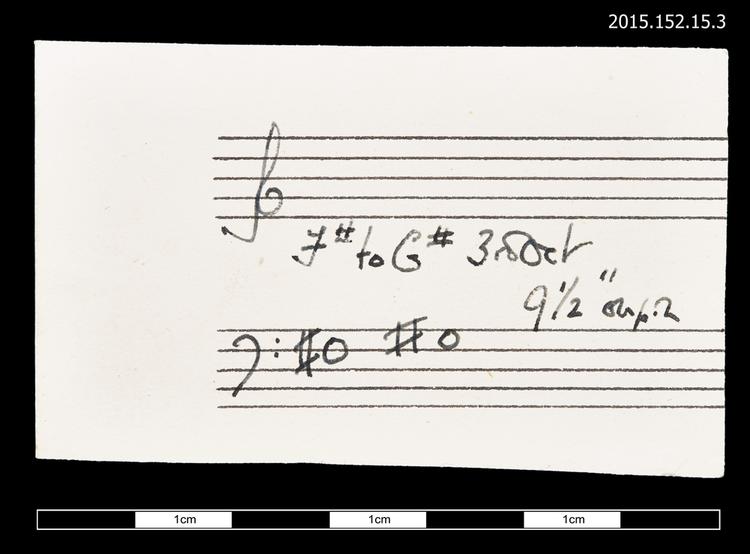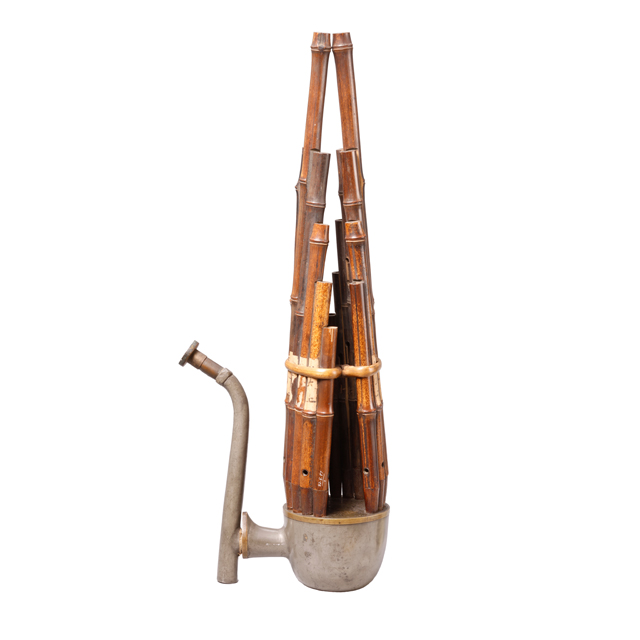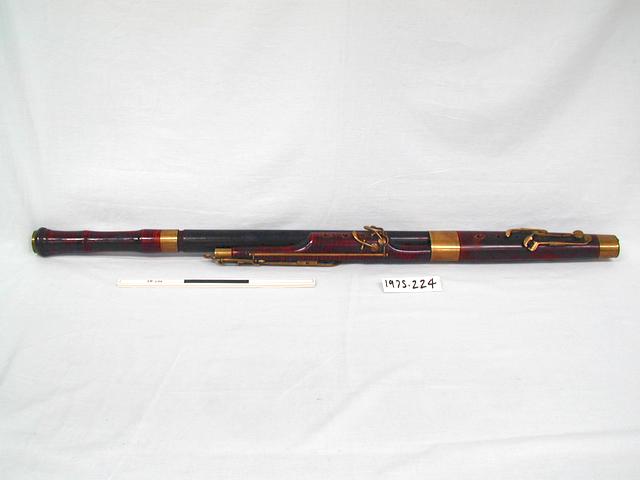
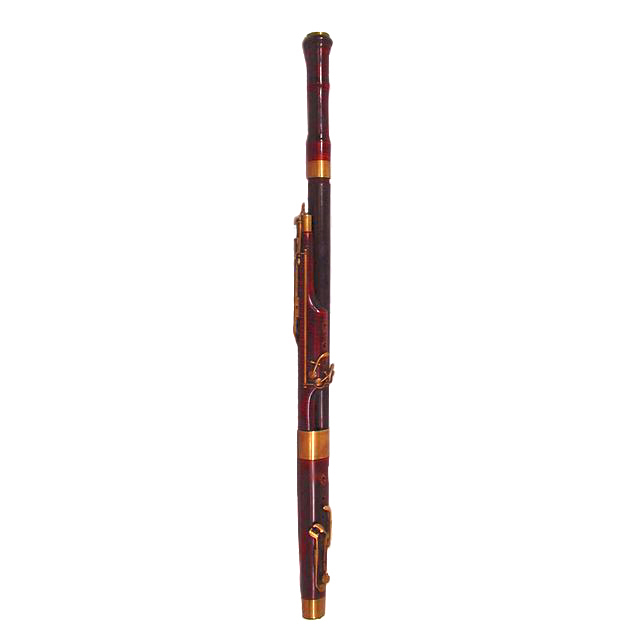
Tenoroon, tenor bassoon with fourteen keys. Card index reads: Tenooron on F. Bought from Oxford University (ex Bate Collection) March 17th 1975. Fourteen brass keys mounted in saddles or on pillars: brass mounts, bell rim and butt casting: maple, stained red-brown, the bass joint of darker colour: F and G sharp keys rollered. Crook seems not to fit correctly and may not be appropriate. Generally in very good condition: surface wear at the finger-holes suggests considerable use: pads sound. C sharp key fouls the crook-key and tends to close it. Crook needs fitting. Royal Military Exhibition 1890 - Day's catalogue, no. 165 & p. 179. Edinburgh Festival 1968 - Galpin Society Soc. Cat. no. 236 p. 34 and plate XII(2). Langwill's index III - P. 139. A well known instrument, exhibited at the International Inventions Exhibition 1885 [see Langwill, The Bassoon, p. 109] and then belonging to W.H.Stone; subsequently at the Royal Military Exhibition 1890; and again a the Edinburgh Festival Exhibition 1958 [photo in possession of E.A.K.R]. This may be the instrumen figured as no.603 in Baines' European and American Musical Instruments: the length [97 cms] agrees, although no.603 is described as having 15 keys; in Day's [rather unreliable] catalogue the lengthof the 14-keyed instrument is given as 38.5 inches [nearly 98 cms] and of the 15 keyed instrument as 37.75 inches [approx 96 cms]. The companion instrument of this pair remains at Oxford. In Langwill's index III the two are referred to as having 13 and 14 keys.
The tenoroon is the tenor version of the bassoon and is pitched a fifth higher in F, hence its French name bassoon quinte. The instrument was developed in France in the 18th century and may have been intended to cover the middle register in the orchestral woodwind section, a role which has at other times been assigned to the dulcian, the alto oboe, the heckelphone and most successfully, the cor anglais. It may also have been intended as a learner's instrument for young bassoon players, who were unable to reach the holes and keys of the full size version. This particular example has appeared in a number of musical instrument exhibitions. It was displayed at the International Inventions Exhibition at the Royal Horticultural Gardens, South Kensington in 1885, at the Royal Military Exhibition at Chelsea Barracks in 1890 and at the Edinburgh Festival Galpin Society Exhibition in 1968. It was bought by the Horniman Museum in 1975 from the Bate Collection at Oxford University. The Bate Collection has another very similar example.



